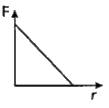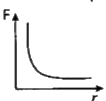A
B
C
D
Text Solution
AI Generated Solution
The correct Answer is:
|
Topper's Solved these Questions
ELECTROSTATICS
DC PANDEY|Exercise Example Type 5|5 VideosView PlaylistELECTROSTATICS
DC PANDEY|Exercise Example Type 6|4 VideosView PlaylistELECTROSTATIC POTENTIAL AND CAPACITORS
DC PANDEY|Exercise (C) Chapter exercises|50 VideosView PlaylistGRAVITATION
DC PANDEY|Exercise All Questions|120 VideosView Playlist
Similar Questions
Explore conceptually related problems
Knowledge Check
Similar Questions
Explore conceptually related problems
DC PANDEY-ELECTROSTATICS-Medical entrances gallery
- What is the smallest electric force between two charges placed at a di...
02:46
|
Playing Now - An electric dipole is placed at an angle of 30^(@) with an electric fi...
02:07
|
Play - The electric field in a certain region is acting radially outwards and...
02:10
|
Play - A Gaussian surface in the cylinder of cross-section pia^(2) and length...
Text Solution
|
Play - A total charge of 5 muC is distributed uniformly on the surface of the...
Text Solution
|
Play - Two small spherical shells a and B are given positive charges of 9 C a...
04:39
|
Play - a point charge q is situated at a distance r from one end of a thin co...
04:38
|
Play - When 10^(19) electrons are removed from a neutral metal plate through ...
02:48
|
Play - A charge Q is uniformly distributed over a large plastic plate. The el...
01:30
|
Play - A uniform electric field E is created between two parallel ., charge...
02:56
|
Play - The line A A' is on charged infinite conducting plane which is perpend...
Text Solution
|
Play - The electric field at a point on equatorial of a dipole and direction ...
01:58
|
Play - Pick out the statement which is incorrect?
06:50
|
Play - An electron of mass m(e ) initially at rest moves through a certain di...
03:35
|
Play - Two charges 10 muC and - 10 muC are placed at points A. and B separate...
05:38
|
Play - A uniform electric field exists in space. Find the flux of this field...
03:45
|
Play - An inclined plane of length 5.60 m making an angle of 45^(@) with the ...
07:40
|
Play - Two charge spheres separated at a distance d exert a force F on each o...
04:56
|
Play - If a charge on the body is 1 nC, then how many electrons are present o...
02:14
|
Play - Electric field at a point of distance r from a uniformly charged wire ...
06:46
|
Play - Two equal and opposite charges of masses m(1) and m(2) are accelerated...
03:31
|
Play



